We at Carey need to be the forerunners of the change that we know the denomination has signalled they want, but don’t know how to do. [Carey Stakeholder, 2016]
As I look back over the last five years at Carey, I want to share some of the incredible changes that have taken place and give my heartfelt thanks to the students and staff of the college. I also want to deliver a wero (challenge) to Carey and the wider church as we continue what we initially called the “bicultural journey” and now refer to as our “Tiriti Hikoi.”
The Bicultural Journey
In 2013 Carey set the goal to “develop a bicultural focus in our leadership training, for the benefit of all cultures.”[1] When I started my role in 2016, it was good to see that Carey had a formal goal related to biculturalism, but I noted that it was tentative, careful to be inclusive without signalling anything specifically Māori. I also noted that it came 181 years after Te Tiriti o Waitangi, more than ninety years after Carey was established, some sixty years after our first Māori graduates at Carey, twenty years after the denomination had officially affirmed the Treaty of Waitangi at Baptist Assembly, and ten years after Te Whare Amorangi (Baptist Māori Ministries Leadership Training School) had failed to thrive in the Carey environment.
Carey might be a forerunner of anything related to biculturalism. We were so late to the party. There were no other Māori on staff and just a handful of Māori students. There was willingness to explore what it meant to be bicultural but no clear definition, so I decided to do some action research.[2] The first round of research confirmed that there was no shared definition but that becoming bicultural was very important to the Carey community.[3] I was heartened to know that the first reason Carey people thought it important, were Christ-centred, biblical reasons. A variety of scriptures were cited, including biculturalism being a form of reconciliation, for which Christ is the model (Col 1:20), the witness of biculturalism to the wisdom of God, bringing glory to God (Eph 3:10) and for the sake of the Gospel being shared with Māori who are “at the ends of the earth” (Acts 1:8). Many others cited scriptures on covenant and justice, relating them to Te Tiriti o Waitangi and arguing that it is the responsibility of the church to show true repentance for breaking the Treaty covenant and to exemplify reconciliation and unity across diversity. Carey people were very aware that this was a journey without a set destination, but one that they felt compelled by God to take. Perhaps the scripture that best captured Carey’s bicultural aspiration was Micah 6:8. He has shown you, O mortal, what is good. And what does the LORD require of you? To act justly and to love mercy and to walk humbly with your God.
The willingness to undertake a God-honouring bicultural journey was clear, but biculturalism was always a problematic term given the range of different understandings and misunderstandings.[4] We looked for a better way to describe our intent and purposes. The best reason to ditch biculturalism was that it sounded as if there were only two cultures involved; the assumption being Māori and Pākehā, leaving out all those who didn’t identify with one of these two.
In 2017, we changed the name.
Te Tiriti Hikoi
Making the shift from a bicultural journey to a Tiriti Hikoi aligned with Carey’s Christ-centred aspirations. It speaks to the justice imperative of God and the reconciliation of all people to God, in Christ.
Hikoi, meaning to step out on a journey, carries with it the connotations of the hikoi land marches and Māori calls for tino rangatiratanga (sovereignty) and redress for the injustices perpetrated against Māori by the Crown and successive New Zealand governments. The “Tiriti” part references two groups – Tangata Whenua and Tangata Tiriti; the people of the land (Māori) and those who are here by virtue of the Treaty of Waitangi via the Crown, Tangata Tiriti. This is inherently inclusive of all people in Aotearoa New Zealand in a way that honours Māori as the first people of the land. It was therefore suitable to capture Carey’s aspirations for unity in diversity, for all peoples. The use of te reo Māori was a no-brainer given that te Tiriti o Waitangi was the version signed by Māori and therefore more legally binding than the Treaty of Waitangi.
So, in our name change from a bicultural journey to a Tiriti Hikoi, we signalled our desire for Māori and all others at Carey to step out together on a journey in a humble and just partnership, before our God.
Since making the shift in terminology, the changes at Carey have accelerated. We have altered our leadership, campus, staff make-up, programmes and curriculum, pedagogy, assessments, student support systems, library collection, all Carey’s main events and much more. It is the nature of the journey, that, once committed to the course, you must deal with the things that hinder the hikoi. In this regard, many Pākehā staff at Carey were surprised by how personally challenging and humbling this was. Māori were not surprised. As colonised people we are forced to live much of our lives at the intersection of cultures, where conflict is an ever-present reality. Māori know how to negotiate the borders but we are never sure of how others, less used to culture clashes, will negotiate the cross-over. Often the reality is that when they struggle, it comes back on us in negative ways.
The desire Māori have to make progress towards genuine partnership is usually tempered by the need to protect our Pākehā brothers and sisters from discovering things about themselves that are painful, and then having that pain be the reason to break relationships. Māori want to be good Tiriti partners and not hurt the feelings of our friends and colleagues, but some hurt is inevitable.
I can put it more plainly. Māori know that we will often be blamed for others’ feelings of discomfort when their normally invisible power and privilege is surfaced. When Māori seek the power sharing that is the promise of a Tiriti Hikoi, we risk being seen as “radical” and “power hungry”, “un-Christian” “untrustworthy” and perhaps worst in Aotearoa 2021, “unkind.” This beautiful ideal of a Tiriti Hikoi can be very painful for everyone, as conflict is inevitable when the dominant group, used to wielding their power but unaware of it, has to confront their privilege and genuinely learn to share control. A serious commitment to the Tiriti Hikoi is required to ensure relationships hold through the tough issues of leadership and control.
With that struggle as the background, outlined below are a range of changes that Carey has undergone, under four key markers of our Tiriti Hikoi. These markers were identified in a second round of action research in 2019.
Tino Rangatiratanga: Power and Partnership
Māori are now in all levels of leadership at the college. Compared to 2016, when just two Māori on the Board and one on staff there are now a total of eight on staff, one in senior management and a Māori advisory group–Te Kāhui Whakaruruhau o Carey–as well as a Māori Board member and more to be co-opted. Progress towards shared leadership has been significant but Māori do not yet have tino rangatiratanga or true partnership. Māori leadership relies on the good-will of majority Pākehā leadership choosing to partner with Māori. Pākehā still hold the power to decide which Māori they engage with in leadership.
That said, in 2021 no important decisions are made without Māori at the table. Power sharing is not mandated at any level, so it is a testament to the strength of conviction in the hikoi and the humility of Carey’s Pākehā leaders, that Māori now have significant voices at all leadership levels at Carey.
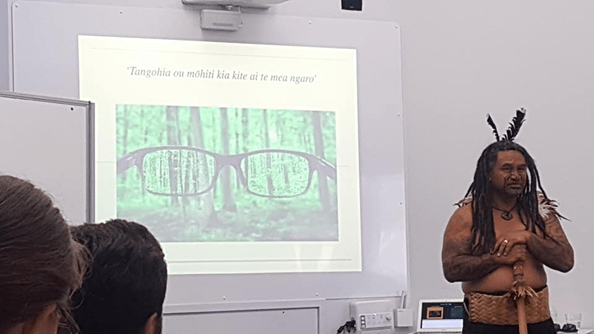
Mātauranga: Māori and Indigenous Epistemologies and Theologies
The curriculum has undergone a demonstrable transformation to include mātauranga Māori and epistemology (Māori knowledge and ways of knowing) woven throughout all Carey programmes of study. Where it was possible to train at Carey and not encounter mātauranga Māori in 2016, this is not possible in 2021. For example, where there were only four courses that obligated students to engage with mātauranga Māori in 2016, by 2019 this had more than doubled to ten courses that obligated students to engage with mātauranga Māori. This year, 23 of our 29 biblical courses offer an opportunity for students to engage with mātauranga Māori, and 100% of our ministry and mission papers offer this opportunity.
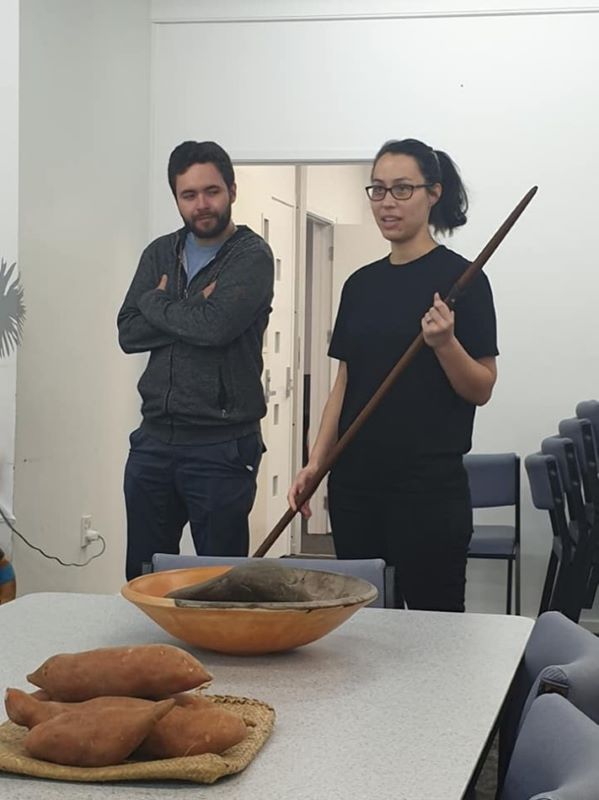
Two significant programme changes were the Te Ao Māori paper which is compulsory in Carey’s Diploma and Bachelor programmes; and the establishment of a Māori leadership training programme – Ngā Pou Amorangi. This three-year internal Carey course will have its first graduates in 2021.
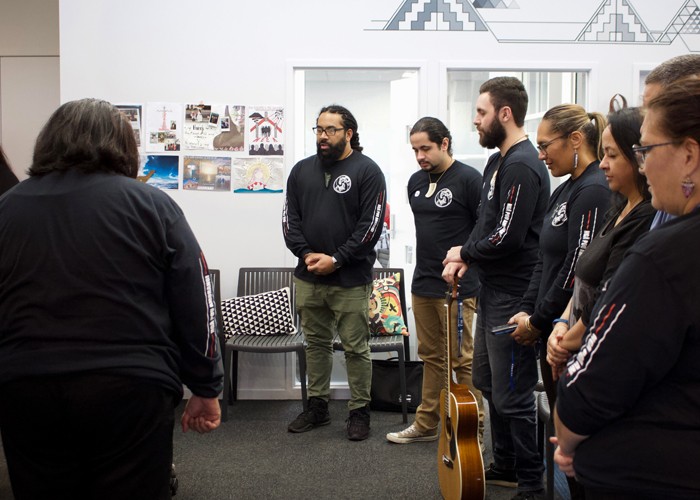
Ako Māori: Preferred Pedagogies and Spaces
The pedagogy now better reflects preferred Māori learning styles. Preferred Māori ways of learning include holistic and integrative practice (connecting the spiritual, land, whānau and community, theory with practice etc); a variety of learning modes other than written, use of tikanga and te reo Māori; students and faculty all learning and teaching; collective work; Māori learning spaces; and Māori educators and Māori academic support staff.
Where there was a noho marae in 2016, added to this there are now also four NPA wānanga per year and classes in te Ao Māori and te reo Māori. Whakawhanaungatanga starts the first class for every course at Carey and poroaki finishes the course. Assessments allow students to present together and, orally in te reo Māori, create Māori whakairo or other artefacts, and compose waiata, karakia, oriori, mōteatea etc.
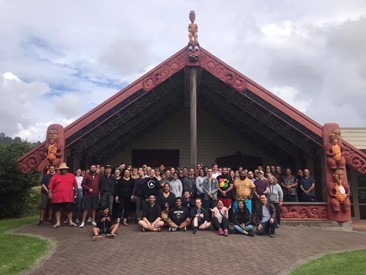
Community spaces are now more welcoming to Māori. In 2016 Te Tiriti o Waitangi and The Treaty of Waitangi were already on the lecture room walls, an addition made at the request of Māori students. By 2021, Te Whare Oranga had been created at the centre of the college and will be completed with carvings depicting the Baptist story in Aotearoa. There are mattresses for noho on campus, guitars and Māori musical instruments for anyone to play, and an office attached to Te Whare Oranga for Māori staff and the Kaiārahi-Rangahau Māori. We have bilingual signage throughout the college and a special symbol identifying all books with Māori content, in the library. We regularly use Māori instruments in Chapel and te reo Māori is usually heard in scripture, responsive readings and song. Te Reo Māori is taught on campus each semester to students, staff and the wider Carey community.
Development of Māori theological leaders.
As well as the eight Māori on Carey staff there are twelve Māori adjunct lecturers, where there were just two in 2016. There is still need for more Māori depth in the faculty. We have been working on growing the faculty we want and need.
Since I was employed as Kaiārahi-Rangahau Māori, three Māori have graduated with a Master of Applied Theology. All three are intending to go on to doctoral study. Hoea is a group established at Carey to support Māori post-grads in theology, some of whom are already teaching in Carey programmes. We hope that most will go on to complete doctorates and some will take on significant leadership roles at Carey. We also have high hopes that this cohort of eleven, will go on to be the theological thought leaders that they certainly have the potential to be. Māori post-grads are achieving higher average grades than non-Māori. Māori staff support Māori academic success, with excellent results. The aim is to ensure all Māori pass and many more Māori complete undergraduate degrees with excellence, standing them in good stead for post-graduate theological study in the future.
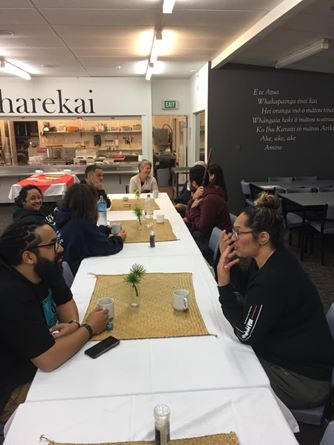
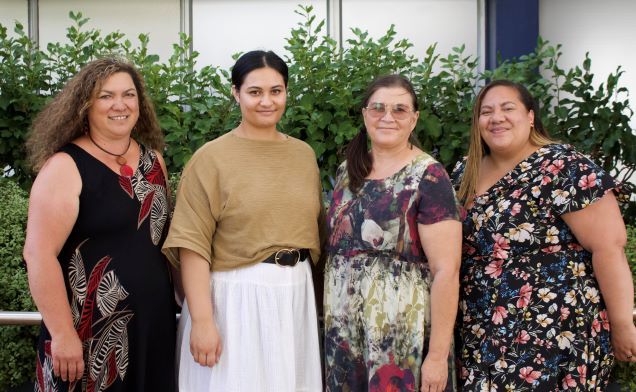
Development of Carey tikanga and kawa (policies and procedures)
Carey has developed our tikanga and a full range of policies and procedures to undergird the Tiriti Hikoi. We begin our semesters with pōwhiri, welcome all new staff with pōwhiri or mihi whakatau, hold regular wānanga on campus, and have a staff team from faculty to groundskeeper that all know a range of hīmene, waiata tautoko, haka and a pepeha. Many Pākehā staff have taken te reo classes including our Principal, who is able to mihi and whaikōrero in te reo Māori. We have an annual wānanga on whaikōrero and kāranga, open to staff and students and have developed depth such that we are able to pull together a pōwhiri at short notice, when required. This was definitely not the case in 2016, when we always had to bring in kaumatua and kuia to support our Carey events. Carey has also developed all the policies to ensure our hikoi is grounded procedurally. All new staff positions are advertised with reference to our hikoi and Māori are at all employment interviews for key staff positions. We have policies that deal with te reo Māori and tikanga and ethical research with Māori. We also have a tikanga manual that outlines Carey’s tikanga and expectations for staff development in regard to the Tiriti Hikoi. Recently Carey identified our research strategy as “Whakawhanaungatanga Methodology” and, indeed, much of how the college now operates ties to this central value. Becoming family is inherent in the term whakawhanaungatanga and in who we are as the family of God at Carey.
In 2018-2019 the college went through a lengthy strategic planning process that involved all staff and a wide range of stakeholders. A key strategic priority from that process was to, “Embed Te Tiriti o Waitangi” with the goal that, “By the end of 2023 Carey will be an intercultural learning community that models well how to journey faithfully as Tangata Whenua and Tangata Tiriti.” I can’t yet say categorically if Carey has achieved the goal[1] but when I look back at how far we have come in five short years, and compare that with many of our churches, I can quite confidently conclude that Carey actually now is a forerunner for change for the Baptist movement.
I am incredibly grateful to God for leading us and so very proud of the students and staff at Carey who have struggled through awkward change to get to a place where the Tiriti Hikoi feels normal. The commitment to the Tiriti Hikoi has held us in relationship throughout my time and the results are astounding, in my opinion. We are now a community that automatically takes the time to start meetings with whakawhanaungatanga, we expect to learn from our students, we have programmes that integrate mātauranga Māori throughout, all staff know what to do at a pōwhiri and mihi whakatau, we have Māori teaching staff and excellent Māori academic results. Thank you to the staff who have stayed the course. Special thanks to Māori students who have pushed us to change. Thank you to all Carey’s students who have embraced the journey.
Even with all this, progress on this journey always, somehow, feels tentative and in danger of falling over at any time. Perhaps it is because Pākehā still hold the power. Perhaps it is because it may be too little too late for Māori students and they will choose more clearly indigenous theology programmes over our woven offerings. Perhaps I only worry because we have been so hopeful before – and watched it all disappear.
Obviously it is my hope and my prayer that Carey stays on the hikoi. All indications are good. In 2016 the people at Carey said that their support for a bicultural journey came from Christian convictions. If that is still so, pursuing a Tiriti Hikoi is not an option – it is imperative to take this uniquely Aotearoa New Zealand path to acting justly, loving mercy and walking humbly with our God. Surely this is a journey worth our denomination following.
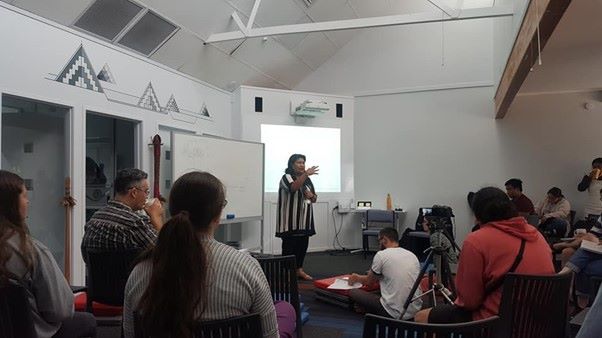
[1] The college’s strategic priorities were outlined in “Five-Year Positioning Paper,” Carey Baptist College, 2013.
[2] Sandy Kerr, “Bicultural Carey, 2025: Action Research to Guide the Development of Carey’s Bicultural Journey,” Unpublished Report, December 2016.
[3] Of the 23 people interviewed (10 Māori, 13 non-Māori) all but three rated it as 10/10 in importance. The lowest rating was 8.5/10.
[4] For a discussion on Carey’s use of the term “Biculturalism” see Sandy Kerr, We Love Aotearoa New Zealand” in What We Love: Reflections on Ministry, Leadership and Mission., ed. Myk Habets & Phil Halstead (Auckland: Archer Press, 2018).

It is so encouraging to hear what is happening at Carey and how it is working to lead us on our tiriti hikoi. He mea nui tēnei mahi. As I read the last bit of this I am reminded of the metaphor offered by Moana Jackson in Imagining Decolonisation, of a harakeke basket. As it is woven it is necessary to keep going. As soon as the work is put down whatever progress has been made will unravel and be lost. The wero you have given Is also a challenge for the churches across Aotearoa to look at our power structures and how we can bring genuine, lasting change. Ngā mihi.
This is fantastic news, I congratulate those who have stayed the journey in making changes.
Ngaa mihi ki a koutou katoa, kororia ki Te Atua ki runga rawa, ko ia te tīmata me te mutunga.
Thankyou Sandy for this wonderful and exciting report. Lionel & Adrienne would be proud to read it They made a signficant impact when I was there with the students. I am blessed to hear what is happening now. May God bless you as you leave Carey and find new directions for your life. Arohanui.
Thank you Sandy for your story, full of grace and truth. I finished at Carey in 2016 when the progress started, heartening to see the progress and thank you for being honest about what is still needed.
Arohanui